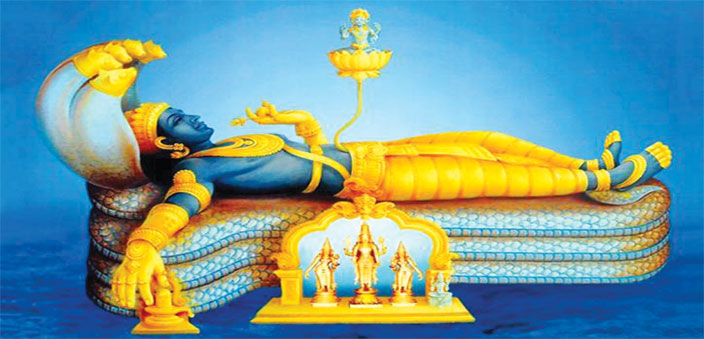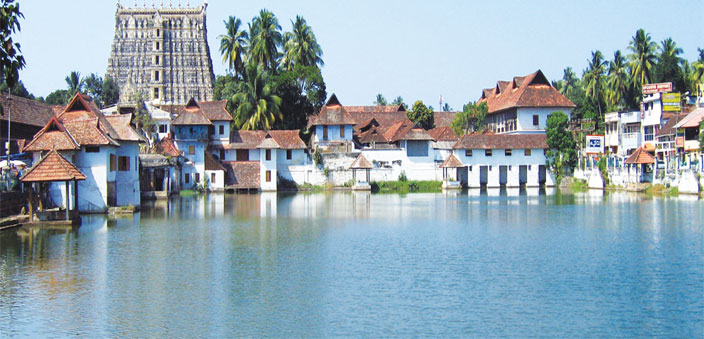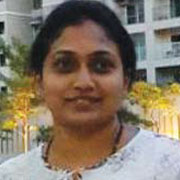Text and photos: Text: Dr. Roopa Vernekar
It was a long flight of imagination for us from Mumbai to the south Indian state Kerala’s capital Thiruvananthapuram (erstwhile Trivandrum), where recently wealth worth crores of rupees were found in the famous Padmanabha Swamy Temple’s underground secret chambers. I, for one, was very thrilled to be visiting the temple.
A myriad thoughts chased my mind as we boarded the flight to Kerala’s capital. What was this temple about? Which king built it? Why were the secret chambers built? Why was all the wealth accumulated? And why were all the chambers not opened in the past decades?

We reached Trivandrum and headed to our hotel. We were staying at Chitram Hotel managed by the KTDC (Kerala Tourism Development Corporation). It was just a 10-minute auto rickshaw ride from our hotel to the temple, which is located in the heart of the city. We were in saris and dhotis, as the temple allows people in Indian ethnic attire only.
The temple
The big gopuram at the entrance of the Padmanabha Swamy Temple welcomed us, and the sweet breeze carrying the fragrance of the flowers and camphor drew us into a divine serenity. By the side of the temple was a tank called the Padma theertham, outside the temple were small outlets which sold dhotis for those who were unprepared and needed ethnic clothes, a must to enter the temple. We entered the temple after a strict security check (remember not to carry mobiles and unnecessary items). As we entered the temple our eyes went to the intricate carvings on the huge pillars and ceiling of the temple. As we passed each pillar and moved into the interiors of the temple, we were struck by both the architectural excellence and the divinity that this temple exuded. We headed towards the garbhagudi or the confined place were the deity was situated. As we were asked to move faster in the line by a few volunteers, our eyes were blessed to catch the glimpse of Lord Vishnu who was in his reclining form on a five-hooded serpent in the garbha graham. It was a life-size statue as if of the real Vishnu in Vaikuntha!
One of the volunteers was kind to us and allowed us to stay for a few extra minutes to admire the deity, and also gave us information about the deity and his form. She explained that the right hand of the deity was over a Shiva lingam, and the left hand held a lotus, and from his nabhi (navel) arose Bramha sitting on the lotus, and hence the name to the deity as the Padmanabha. Sitting next to Lord Vishnu are Bhudevi and Lakshmi, and the deity is made up of 12,008 saligramams (black stone) that were brought from the Gandaki River in Nepal. The diety is visible through three doors. We thanked her and moved on and reached the other side of the temple, where we found a huge crowd surrounding one of the temple priests, who was giving information about the temple. We too joined the crowd.

According to the priest, the gopuram is 100 ft tall and is broad when compared to other temples of India. The gopuram has seven doors located one above the other signifying the seven doors of the Vaikuntha, and the devotees symbolically cross the seven doors before reaching the deity. The temple has 365 pillars indicating the 365 days in a year with different carvings stating the significance of each day. As the priest continued, a curious visitor asked “What about the secret vaults and can we have a look at those?” The priest explained that the secret chambers were present underground and were not open to the public. He said that six vaults were opened and gold and precious stones worth cores were obtained, but one of the vaults named Kallarai B is yet unopened, as it is closely associated with Lord Padmanabha, and is not a part of the temple treasury. The Lord Ugra Narasimha is believed to be the protector of vault Kallarai B. There is a serpent image on the vault, and he alleged that that previous attempts to open the vaults had failed. Indeed, the people who tried to open the vaults found it occupied by serpents, and fled for their lives, he narrated. He contended that Kallarai B has no nuts and bolts or any other latches, but was secured using Naga bandham or nagapaasams, secret chants by the Siddha purushas who lived during the reign of King Marthanda Varma in the 16th century; and only by reciting the Garuda mantra, the sacred chant by the Siddha purushas can this vault be opened. It is believed by Vedic astrologers that any human attempt to open this vault could bring about catastrophes in and around the temple, or even to the whole world! The priest’s audience was spellbound and had no further questions about the vaults. The priest, who was also a good guide, then received dakshina from the crowd and went away to perform his daily rituals.
As we walked amazed, recalling and discussing all that the priest had told us about the secret vaults, a volunteer instructed us to follow a particular line, and as we did so, without knowing where we were heading to, we landed in the temple’s dininghall, where meals are served to devotees every day. We picked up our plates and were served with rice, sambhar (a tamarind and pulses dish), palyam (a vegetable gravy), and finally with sweet pongal to complete the meal. The meal was filling as it calmed the body of hunger and our mind was satiated. We left the temple thinking that indeed, there is enough for everyone’s needs in this world, but not for man’s greed. And while we may have reached the moon, let’s not forget the divine as he is the creator of the moon and the universe.


